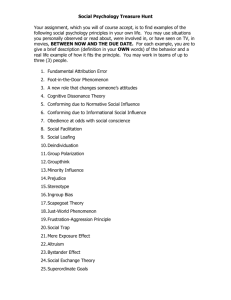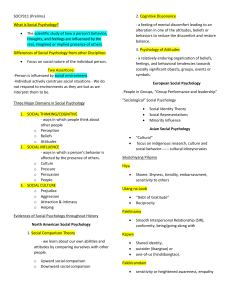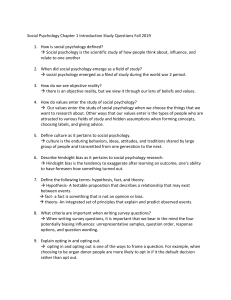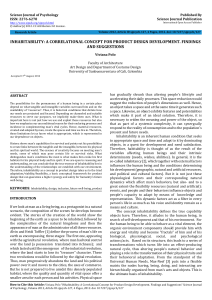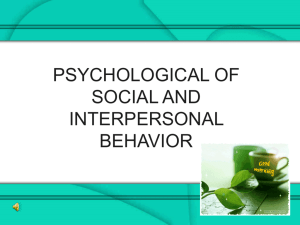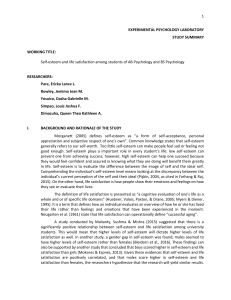Quiz #1 Chapters 1 & 2 Select the option that best answers each
advertisement
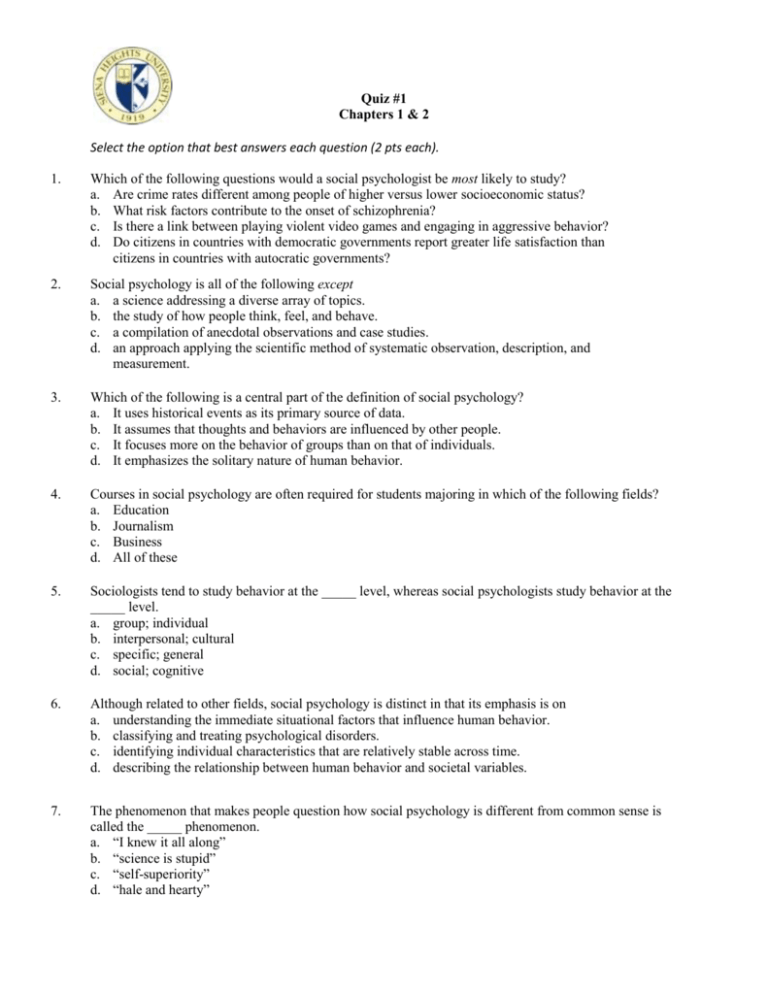
Quiz #1 Chapters 1 & 2 Select the option that best answers each question (2 pts each). 1. Which of the following questions would a social psychologist be most likely to study? a. Are crime rates different among people of higher versus lower socioeconomic status? b. What risk factors contribute to the onset of schizophrenia? c. Is there a link between playing violent video games and engaging in aggressive behavior? d. Do citizens in countries with democratic governments report greater life satisfaction than citizens in countries with autocratic governments? 2. Social psychology is all of the following except a. a science addressing a diverse array of topics. b. the study of how people think, feel, and behave. c. a compilation of anecdotal observations and case studies. d. an approach applying the scientific method of systematic observation, description, and measurement. 3. Which of the following is a central part of the definition of social psychology? a. It uses historical events as its primary source of data. b. It assumes that thoughts and behaviors are influenced by other people. c. It focuses more on the behavior of groups than on that of individuals. d. It emphasizes the solitary nature of human behavior. 4. Courses in social psychology are often required for students majoring in which of the following fields? a. Education b. Journalism c. Business d. All of these 5. Sociologists tend to study behavior at the _____ level, whereas social psychologists study behavior at the _____ level. a. group; individual b. interpersonal; cultural c. specific; general d. social; cognitive 6. Although related to other fields, social psychology is distinct in that its emphasis is on a. understanding the immediate situational factors that influence human behavior. b. classifying and treating psychological disorders. c. identifying individual characteristics that are relatively stable across time. d. describing the relationship between human behavior and societal variables. 7. The phenomenon that makes people question how social psychology is different from common sense is called the _____ phenomenon. a. “I knew it all along” b. “science is stupid” c. “self-superiority” d. “hale and hearty” 8. “Moms prefer Brand X of peanut butter,” a commercial claims. Sarah wonders what other brands were used as the comparison group. Which benefit of learning about research methods is Sarah displaying? a. Critical evaluation of information b. Better memory for the results of studies c. Better understanding of studies d. Enhanced self-esteem 9. All social psychological research must begin with a(n) a. question. b. independent variable. c. subject variable. d. control group. 10. Which of the following is not a testable hypothesis? a. Women tend to have more opposite-sex friends than men. b. Stereotypes are more likely to impact judgments when people are tired. c. People smile more when they are lying than when they are telling the truth. d. Refusing to help someone in need is morally wrong. 11. . A researcher wanted to see if alcohol consumption raises or lowers a person’s self-esteem. In one condition, he gives participants three glasses of punch spiked with alcohol and in the other he gives participants three glasses of plain punch. After participants finish their punch, they complete the Rosenberg (1965) self-esteem scale. In this study, self-esteem is the ________ and the score on the Rosenberg questionnaire is the ________. a. conceptual independent variable; operational independent variable b. conceptual dependent variable; operational dependent variable c. operational dependent variable; conceptual dependent variable d. conceptual independent variable; operational dependent variable 12. Which of the following is true of correlational research? a. It is a powerful way to establish causal relationships between variables. b. It allows an experimenter to control extraneous variables. c. It permits researchers to determine whether one variable is predictive of another. d. It is limited to the study of variables that can be measured in the laboratory. 13. Random assignment is a defining feature of an experiment. It means that a. participants are able to select the particular experimental manipulations they wish to experience. b. participants were randomly selected from the population of interest. c. whether participants are in one condition or another is determined at random. d. participants are assigned to the experimental conditions on the basis of their pre-existing differences.

